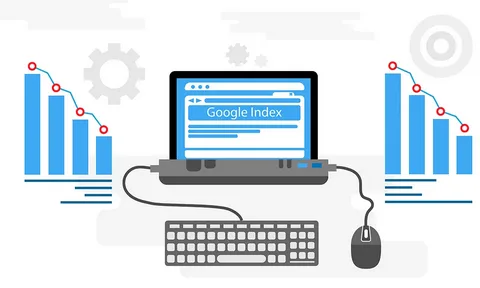
In today’s digital age, ensuring that your website is properly indexed on Google is crucial for visibility and search engine optimization (SEO). Google’s indexing process determines whether your website’s pages appear in search results, which can significantly impact your traffic and online presence. In this article, we’ll guide you through the steps to check if your website is indexed and provide actionable strategies for improving your site’s indexing status.
Understanding Google Indexing
Index Website On Google is the process by which Google’s search engine crawls and stores your website’s pages in its database. When a page is indexed, it becomes available to users in search results, which can drive organic traffic to your site. Indexing involves several stages, including crawling, processing, and storing page information. To understand whether your website is indexed, it’s important to know what factors influence the indexing process.
Search engines use bots or spiders to crawl websites, following links from one page to another and gathering content along the way. Google’s algorithm evaluates various aspects of your website, such as content quality, relevance, and internal linking structure, to decide how and where to index it. Ensuring your site is properly indexed is essential for improving its visibility and performance in search results.
Checking Indexing Status Using Google Search Console
Google Search Console is a powerful tool provided by Google that allows you to monitor and manage your website’s presence in search results. To check if your website is indexed, log in to your Google Search Console account and navigate to the “Coverage” report. This report provides insights into which pages of your site are indexed and which may have indexing issues.
In the Coverage report, you will see different statuses such as “Error,” “Valid with warnings,” and “Valid.” Pages listed as “Valid” are successfully indexed, while pages with errors or warnings may require attention. You can also use the “URL Inspection” tool to check individual URLs for indexing status. Simply enter a URL to see if it’s indexed and identify any issues that might be affecting its indexing.
Verifying Indexing Using Site Search Commands
This method is useful for quickly assessing which pages are included in Google’s index and for identifying any gaps in indexing. However, it’s important to note that this command may not show all indexed pages, as Google may limit the number of results displayed. For a more comprehensive view, Google Search Console remains the most reliable tool.
Troubleshooting Indexing Issues
If you find that your website or specific pages are not indexed, there are several potential issues to investigate. Common problems include robots.txt file restrictions, meta tags that prevent indexing, and technical errors on your site. Ensure that your robots.txt file is not blocking important pages and that your meta tags do not contain “noindex” directives.
Additionally, check for crawl errors in Google Search Console and address any issues that may prevent Google’s bots from accessing your site. Improving your website’s overall SEO and ensuring that your pages are accessible and relevant can help resolve indexing problems and improve your site’s visibility in search results.
Strategies for Improving Indexing and Visibility
To enhance your website’s indexing and search visibility, focus on optimizing your site’s content and structure. Create high-quality, relevant content that provides value to users and encourages Google to index your pages. Use internal linking to help Google’s bots navigate your site and discover new content.
Regularly update your website with fresh content and ensure that your site’s technical aspects, such as site speed and mobile-friendliness, are optimized. Submitting a sitemap to Google Search Console can also help improve indexing by providing a clear map of your site’s structure. By implementing these strategies, you can increase the likelihood of your pages being indexed and improve your overall search engine performance.








